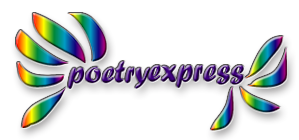A poem's form is partly visual: its look on the page. George Herbert's "Easter Wings" is an example of striking visual form, as is e. e. cummings' "r-p-o-p-h-e-s-s-a-g-r." But visual form also works in less obvious ways. The lean, spare look of most Emily Dickinson poems complements her terse style, while the long, sweeping lines of Walt Whitman accentuate his bold, expansive message.
Poetic form is also partly auditory. Patterns of sound emerge and blend into larger patterns of meter and rhythm, assonance and rhyme. Meanwhile, images and emotions, agents and events intersect as the poem is read.
Some poems, like sonnets or villanelles, are built on pre-existing patterns that have been handed down through the centuries. A person who writes such a poem, knows in advance how long it will be, how many stanzas it will have, and how long each line will be. Yet while writing within these constraints, the poet will invent a fresh vision.
Writers of free verse have a different challenge--to create an entirely new form, something unique. Free verse poems, to be sure, often adapt structures and devices seen in other poems, yet for the most part, the poets rely upon their intuition and imagination. Some look outward for form, toward objective externals. Others seek form within, expressing memories and emotions. Some see form as an outer skin or membrane giving shape to content. Others as an inner skeleton providing structure and support. Some see it as organic. Others as synthetic.
Whatever your poetic bent, you may find the following observation by Kenneth Burke to be useful. According to Burke, "Form in literature is an arousing and fulfillment of desires. A work has form insofar as one part of it leads a reader to anticipate another part, to be gratified by their sequence." In practice, consider your readers' expectations, those they bring to the poem and those you create. Pique your readers' curiosity early. Lead them on through the middle. Leave them satisfied in the end.
